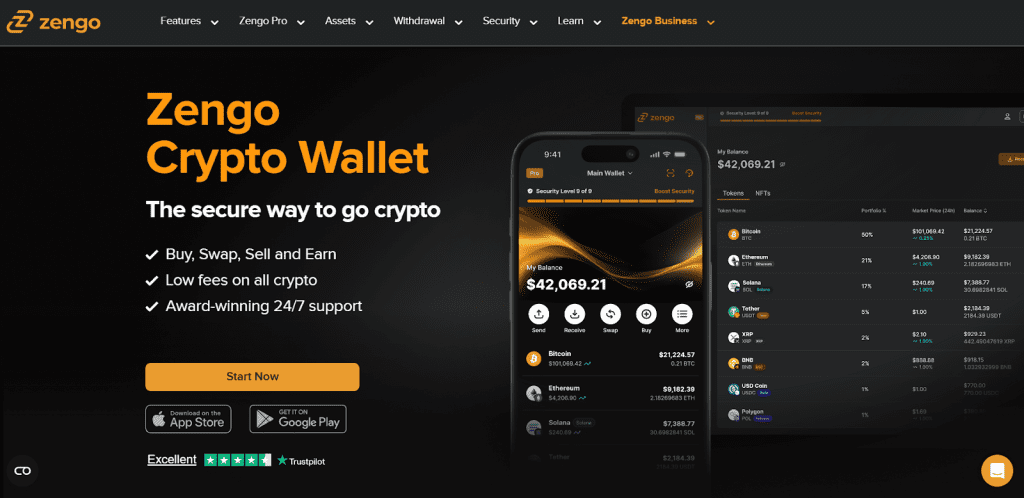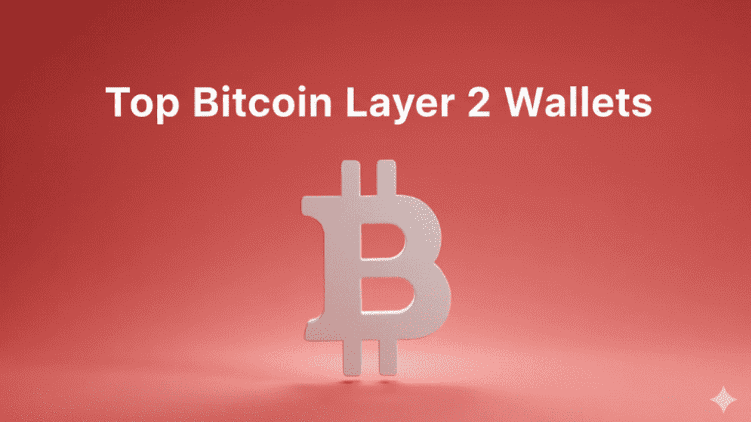Bitcoin’s Layer 2 ecosystem has matured rapidly, unlocking new possibilities for faster transactions, lower fees, and decentralized finance (DeFi) applications built on Bitcoin.
To fully tap into this expanding universe, the right wallet is indispensable, not just as a secure place to store assets, but also as a comprehensive gateway to the growing Bitcoin Web3 economy.
Keep reading to learn about three leading Bitcoin Layer 2 wallets to help you decide which one best fits your journey into the Bitcoin economy.
Quick Take
- Bitcoin Layer 2 wallets enable seamless management of Bitcoin and Layer 2 assets, including tokens and NFTs.
- Xverse stands out as the most bitcoin-dedicated, user-friendly, and feature-rich wallet for the Layer 2 ecosystem.
- Other popular wallets offer multi-chain support but vary in their degree of Layer 2 integration.
- Choosing the right wallet depends on security preferences, user experience, and requirements for self-custody.
What Are Bitcoin Wallets?
Bitcoin Layer 2 wallets are specialized digital wallets designed not only to hold Bitcoin (BTC) but also to support assets and applications built on Bitcoin’s Layer 2 protocols, such as the Lightning Network, Stacks, Spark, and other emerging solutions.
Layer 2 wallets differ from traditional Bitcoin wallets in that they integrate support for Layer 2 tokens, NFTs, and decentralized applications (dApps). This makes them essential tools for users wanting to fully participate in Bitcoin’s growing decentralized ecosystem beyond basic transactions.
Essential Features
When evaluating Bitcoin Layer 2 wallets, it is essential to consider:
- Non-custodial control: Ensures users retain full ownership of private keys, enhancing security and privacy.
- Multi-protocol support: Compatibility with multiple Layer 2 protocols and tokens extends wallet utility.
- User experience: Intuitive design and seamless cross-device syncing improve accessibility.
- Security integrations: Options to connect hardware wallets for cold storage elevate asset protection.
- DeFi and NFT access: The ability to interact with DeFi protocols and trade or store Bitcoin NFTs opens up new use cases.
Xverse

Xverse wallet redefines L2 access with its non-custodial focus, supporting a unified dashboard for BTC, Bitcoin L1 assets like Ordinals and Runes, and assets across Bitcoin L2s like Stacks, Starknet, Spark.
Users can buy, hold, trade, and swap directly in-app, leveraging a smart-routing aggregator for the best rates on bridges and L2 transfers. Available on iOS, Android, and as a Chrome extension, it provides users with a synchronized experience across devices.
Key Highlights
- Supports a wide range of Bitcoin assets, including Rare Sats, Ordinals, Runes, as well as Stacks tokens and BTKN tokens.
- Seamless integration with hardware wallets like Ledger and Keystone for enhanced security.
- Enables users to earn yield on BTC and STX through DeFi protocols built on Layer 2s.
- Offers in-wallet trading, token swaps, and portfolio tracking across multiple Layer 2 protocols.
- Recently integrated Spark Layer 2, allowing fast, fee-free Bitcoin transactions and token minting.
- Maintains strict privacy policies with data fully encrypted and stored on-device.
Xverse positions itself not just as a wallet but as a gateway that empowers users to navigate the entire Bitcoin Layer 2 and Web3 space effortlessly. By accommodating the latest Layer 2 solutions in a consolidated, self-custodial environment, it appeals to Bitcoin enthusiasts who are enthusiastic about DeFi, NFTs, and Web3.
Zengo Wallet

Zengo is a multi-asset wallet that introduces keyless security and simple, user-friendly interfaces. It supports Bitcoin and Layer 2 networks.
Key Highlights
- Employs advanced cryptography to provide a keyless security system that removes private key management risks.
- Supports bitcoin and numerous other cryptocurrencies, catering to users with diversified portfolios.
- Includes multiple layers of security such as biometric authentication and multi-factor verification.
- Layer 2 support is expanding, with compatibility for Lightning transactions and basic Stacks interaction.
- Ideal for users prioritizing security and convenience with a broad crypto scope beyond bitcoin alone.
Leather Wallet

Leather, the rebranded Hiro Wallet, is an open-source, self-custodial wallet designed for Bitcoin’s Layer 2 growth, emphasizing Stacks integration for sBTC liquidity, smart contracts, and yield.
The wallet is focused on privacy and security while enabling Layer 2 interactions primarily through integration with the Bitcoin Layer 2 protocol Stacks.
Key Highlights
- Supports Bitcoin Layer 2 protocols, including Lightning Network and Stacks.
- Enables offline cold storage with software companion app for managing Layer 2 tokens.
- Popular with users valuing security in a decentralized, privacy-focused environment.
- Layer 2 interactions are supported, but with a focus on secure custody rather than dApp or NFT exploration.
So, Which Is the Best Wallet?
Choosing the best Bitcoin L2 wallet comes down to your needs: whether that’s access to a broad ecosystem, native integrations, simplicity, convenience, or your level of experience.
That said, for true sovereignty, a non-custodial option empowers you to retain complete control, bridging L2s without intermediaries. While custodial wallets may offer ease of use, they expose users to counterparty risks that non-custodial wallets mitigate effectively.
Try out these wallets for yourself. Your preferences will determine the winner, but prioritizing keys-in-hand ensures your bitcoin grows on your terms.
Explore Textify’s AI membership
Need a Chart? Explore the world’s largest Charts database
